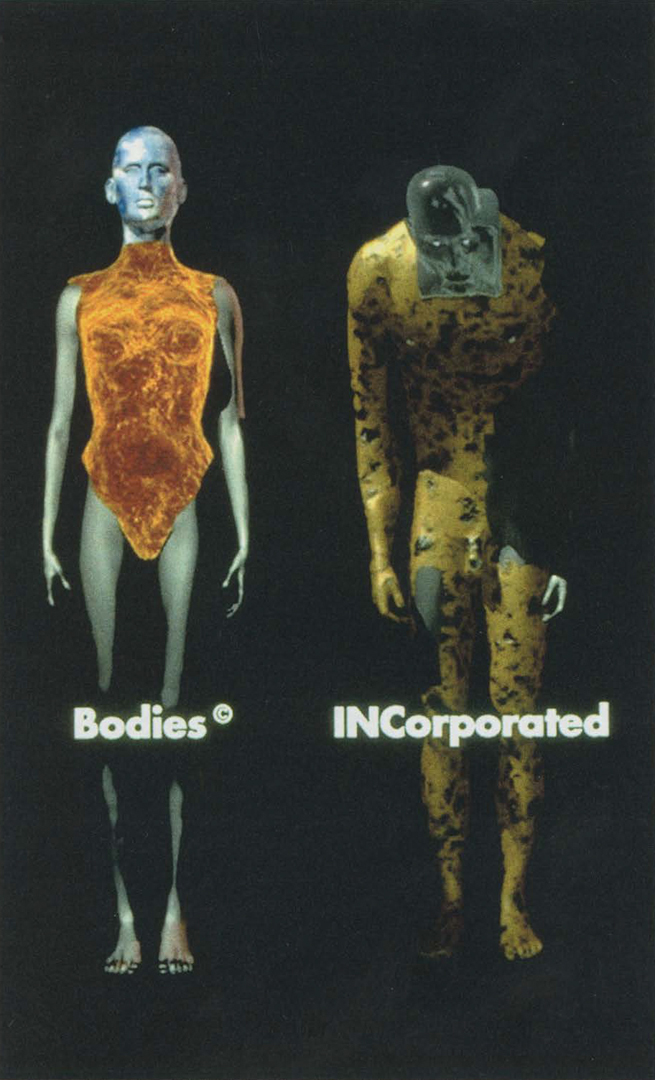Victoria Vesna: Bodies© INCorporated
Artist(s):
Collaborators:
Title:
- Bodies© INCorporated
Exhibition:
Creation Year:
- 1996
Category:
Keywords:
Artist Statement:
Bodies© INCorporated., a public space on the Web, occasionally emerges as a physical environment. In the summer of 1996, it appears simultaneously at the San Francisco Art Institute, SIGGRAPH 96, and the Contemporary Arts Center in New Orleans. The work is comprised of three main public sites, where different sets of activities and emotional dynamics occur. The first is “Limbo,” a gray, frustrating, rather static and non-descript zone, where information can be accessed about bodies that have been put on hold by owners who have abandoned or neglected them. The second is the “Necropolis,” a richly textured, baroque setting that produces feelings of anxiety, fear, and exhilaration, where owners choose from a seemingly endless list of disturbing possibilities for how they wish their bodies to die. The third is the “Exhibition/ Body Building” space, a “gallery” domain where bodies are displayed and visitors can actively reassemble their “virtual others.”
Events in each of the three territories ignite a range of emotional responses and raise a variety of interesting issues related to online community dynamics. For example, when the body is “killed,” it is announced to the collection of “body owners” via email and made into a public spectacle. The implications of the actual person being identified in the public space have the potential to radically change the community dynamic. When bodies are exhibited over the Internet, quite obviously, they reach a much larger audience than in a public space like a museum. But once they are in a physical space, the owners tend to take their exhibition much more seriously and any kind of public event much more personally.
There is an odd sense of complexity in the murder of a thought-creation made public. How does the graphic representation of the body amplify our relationship to it? What sort of psychological commitment and attachment do owners exhibit toward their “virtual” bodies? What happens when you discover that your body has been publicly altered in some way, without your knowledge or participation? How does the body become a source of pleasure and anxiety as it moves through changes and permutations that are outside the owner’s control? What sort of emotional dynamics result from bodies being displayed as a public spectacle? These are just a few questions being raised in Bodies© INCorporated. Perhaps you will have a few of your own.





